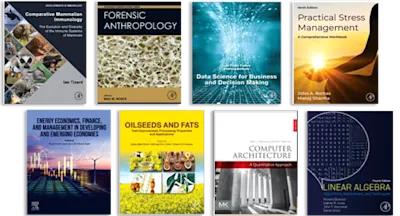
Fundamental Chemistry with Matlab
- 1st Edition - March 25, 2022
- Imprint: Elsevier
- Authors: Daniele Mazza, Enrico Canuto
- Language: English
- Paperback ISBN:9 7 8 - 0 - 3 2 3 - 9 1 3 4 1 - 6
- eBook ISBN:9 7 8 - 0 - 3 2 3 - 9 1 3 4 2 - 3
Fundamental Chemistry with MATLAB highlights how MATLAB can be used to explore the fundamentals and applications of key topics in chemistry. After an introduction to MATLAB, the bo… Read more
Purchase options

- Provides practical examples of using the MATLAB platform to explore contemporary problems in chemistry
- Outlines the use of MATLAB Simulink to produce block diagrams for dynamic systems, such as in chemical reaction kinetics
- Heavily illustrated with supportive block-diagrams and both 2D and 3D MATLAB plots throughout
1. Atomic Orbitals
2. Balancing chemical reactions
3. Chemical kinetics
4. More complex kinetics
5. Gaseous reactions and equilibrium
6. Physical properties of gases and vapours
7. Acid-Base equilibria in water
8. Colligative properties of solutions
9. Seawater chemical equilibria
10. Prevalence diagrams for common systems
Appendix
A. Linear Algebra
B. Introduction to dynamic systems
C. Introduction to linear regression
D. Introduction to Matlab Simulink
E. table of the sea water coefficients
F. The Schrödinger equation
- Edition: 1
- Published: March 25, 2022
- Imprint: Elsevier
- Language: English
DM
Daniele Mazza
EC
Enrico Canuto
Enrico Canuto taught Automatic Control for more than 40 years at Politecnico di Torino, Italy. He developed and applied the embedded model control methodology for the design and implementation of digital control systems. Over the course of his career, he has contributed to data reduction of the European astrometric mission Hipparcos, concluding with the publication of the Hipparcos star Catalogue of 120,000 stars; to the European GOCE mission and other forthcoming missions; to instruments for space qualification like the Nanobalance thrust-stand. In the last ten years, he has also collaborated with the Center for Gravity Experiments, Huazhong University of Science and Technology, Wuhan, and the Tianqin Centre, Sun-Yat-Sen University, Zhuhai, China, in the field of scientific space missions aimed at detecting gravitational waves.